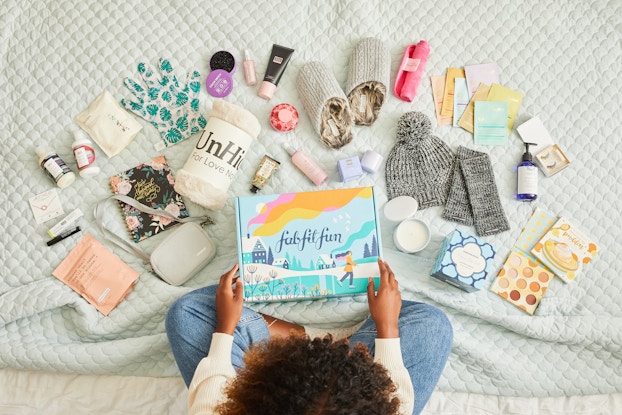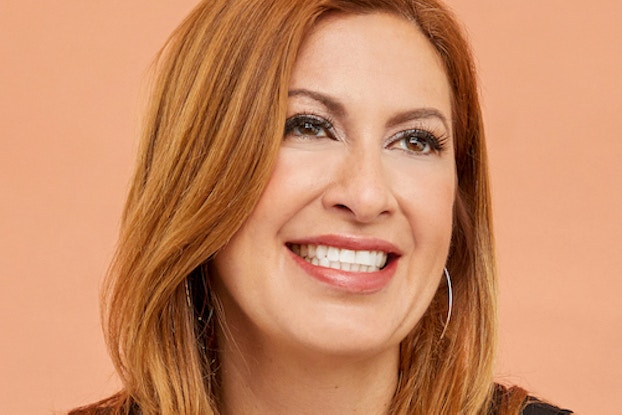
In our age of digital ubiquity, the boundaries between content and commerce get ever blurrier, and opportunities for product discovery have multiplied. To keep up, retailers and brands have been experimenting with new formats and strategies to deliver excitement to the consumer.
FabFitFun, which co-founders Katie Rosen Kitchens, Daniel Broukhim and Michael Broukhim began as an online magazine dedicated to beauty, fitness and fashion in 2010, has since layered different offerings into its business in a way that feels natural to its members. In 2013, the company joined the burgeoning subscription box market with a quarterly delivery designed to mimic the “swag bag” given to editors at brand-sponsored events — that is, about $200 worth of full-size products, rather than sample sizes, for $50 per season.
According to McKinsey, the subscription box market has grown at a compound annual growth rate of almost 60% since 2014. To differentiate and drive continuous membership growth, FabFitFun has expanded its content-meets-commerce model into a multichannel shopping experience with community baked into its core.
Now, the subscription fee doesn’t just give members access to a seasonal box of goodies. FabFitFun membership includes access to VIP flash sales, an exclusive digital community and shoppable video content that helps to bring the items on offer to life.
“We say membership versus subscription because that’s what we’ve evolved into,” co-founder Kitchens, who also serves as the brand’s editor-in-chief, told CO—. “The box is really the premium piece of the membership, but we are continuing to layer on lots of different perks so that, even if you didn’t like all the products in your box, you’re still getting so much value from the overall membership.”
In 2018, the company crossed the one-million-members mark, generating over $300 million in revenue. This January, FabFitFun received a $80 million investment led by Kleiner Perkins to put towards continued innovation.
“When done well,” says Scott Lachut, president of research and strategy at retail innovation firm PSFK, "these services can go beyond the surprise element, to offer members an experience that feels tailored and relevant. This means creating an experience that feels like more than just a collection of products.”
The box is really the premium piece of the membership, but we are continuing to layer on lots of different perks so that, even if you didn’t like all the products in your box, you’re still getting so much value from the overall membership.
Katie Rosen Kitchens, co-founder and editor-in-chief, FabFitFun
Community
FabFitFun finds that its customer base is so engaged that it's more akin to a community or family as opposed to a group of separate buyers. Read on for more ways your business can boost customer engagement.
TV shopping for a new generation
Last year, Kitchens and team responded to changing consumer behavior with the launch of FabFitFun TV, a premium content channel viewable by all paying members. “In general, people are just shopping in a different way,” she says. “They’re no longer just interested in the cheapest product, or one brand. They actually want to understand the story and also have an experience.”
PSFK’s Lachut echoes Kitchens’ emphasis on storytelling to boost a subscription box’s value proposition. “The companies that are doing subscription well,” he told CO—, “focus on layering aspects of storytelling, education and service onto the products themselves, answering questions like ‘Why these products now?’ and ‘How do I get the most out of them?’ to create additional value for customers and make them more likely to reengage.”
Recently, FabFitFun has expanded into live shopping TV, with content Kitchens describes as “QVC meets MasterClass.” Video brings products to life in a way that e-commerce cannot, with the addition of features like product trials and testimonials and interviews with brand founders. According to Kitchens, brands new to FabFitFun tend to get a massive boost in sales following an appearance on its TV programming.
It brings the membership to life as well, giving viewers a look behind the scenes at the FabFitFun team, rather than a roster of telegenic professionals. “We’re bringing in a very unique cast of characters who are relevant to our members,” Kitchens says. "It’s not talent, it’s our merchandisers, our lawyer — people who really exist in the FabFitFun world.” Because FabFitFun Live sits outside the paywall, it also acts as a marketing tool for the conversion of new members.
Call them ‘members,’ not ‘subscribers’
For Kitchens, building and nurturing the FabFitFun community is central to driving customer loyalty. "When most brands talk about community, they’re usually talking about their social media following,” she says. “But social media is also a kind of inauthentic version of the world.”
Though the company has a healthy social following, it goes deeper by providing members with a forum to exchange product reviews, give life advice, and form real bonds with each other. “Women are on there day and night talking about the box and the product, but also sharing photos of their pets and their kids, advice for ways to ease anxiety, and forming in-person meetups across the U.S., Canada and the UK,” Kitchens says.
Because this part of the site is behind a paywall, members feel safer and more comfortable opening up to those with whom they share the common bond of being FabFitFun members. “We’ve seen members who have gone across state lines to visit each other in hospitals,” she adds. “It’s the bond they form because they feel comfortable being their true authentic selves.”

Harnessing the power of customer data
Recognizing that the needs of each woman are unique and differ across demographics, the company prioritizes appealing to a wide swath of consumer groups. At the launch of the box, FabFitFun delivered to around 2,000 subscribers, most of whom fell into a similar demographic as Kitchens. As the business has scaled, collecting data and a robust customer insights team have been key to accommodating a much wider range of women.
“We live in a world where most people are really afraid to give up their information and data, especially to a commerce company,” Kitchens said. “But we do not have that problem at all. The more information they give us, the better the membership becomes.”
FabFitFun aims to build value into its business model for its brand partners as well. After the season’s boxes go out and customers have some time to try the products inside, FabFitFun’s customer insight team sends out a custom survey featuring questions chosen by the brand itself. According to Kitchens, the company has over a 20% return rate on these questionnaires.
“This also creates the opportunity to identify and activate superfans, who can be converted into ambassadors,” Lachut says. “Subscription services should lean heavily on their brand partners to co-create that member experience.”
FabFitFun has leveraged the trust of its members, and its brand partners, to create an ecosystem that rewards and incentivizes. That co-creation, where customers see their suggestions reflected in their membership, helps solidify relationships into the future, Kitchens said.
“Our members really do act like our fourth cofounder,” Kitchens muses. “They’re building this business with us.”
CO— aims to bring you inspiration from leading respected experts. However, before making any business decision, you should consult a professional who can advise you based on your individual situation.
Want to read more? Be sure to follow us on LinkedIn!
CO—is committed to helping you start, run and grow your small business. Learn more about the benefits of small business membership in the U.S. Chamber of Commerce, here.







